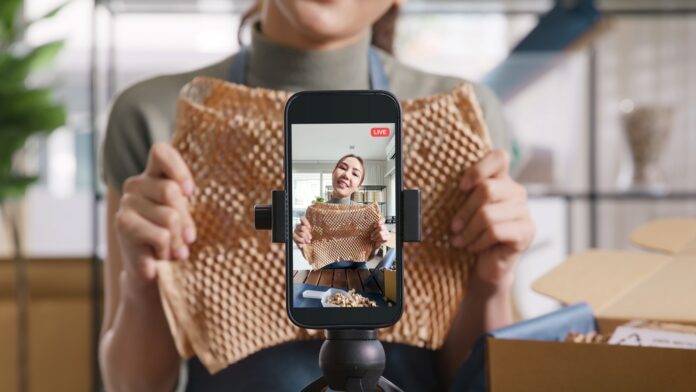L'influencer marketing continua a espandersi rapidamente, ma secondo un nuovo report di eMarketer in collaborazione con Viral Nation, questa crescita non è sempre accompagnata da solide pratiche di brand safety. Entro il 2025, i budget per il settore degli influencer aumenteranno del 15%, raggiungendo i 10,52 miliardi di dollari, con l'86% dei marketer che già utilizza questo canale. Ciononostante, il 77,8% degli intervistati afferma che le preoccupazioni relative alla brand safety influenzano la loro propensione a investire.
Sebbene la maggior parte delle aziende stia aumentando gli investimenti (il 70,9% degli intervistati prevede di aumentare la spesa per gli influencer nei prossimi tre anni), solo il 30,1% considera l'influencer marketing "molto sicuro" e il 55,4% lo considera "abbastanza sicuro, ma con riserve". In pratica, le prestazioni e i risultati immediati continuano ad avere la precedenza sulle preoccupazioni relative alla sicurezza: quando valutano le campagne, i marchi danno priorità alle prestazioni (27,4%), al tasso di coinvolgimento (23,1%), alla qualità dei contenuti (15,4%) e alla portata demografica (12,8%), mentre la sicurezza del marchio appare prioritaria solo per l'11,1%.
Il rapporto evidenzia lacune concrete nei processi di verifica: solo il 9,4% dei brand esternalizza completamente la verifica dei creator e l'81,2% esegue ancora qualche tipo di revisione manuale dei contenuti. Ancora più preoccupante è il fatto che oltre il 50% dei professionisti dedica 30 minuti o meno all'analisi di un influencer, uno sforzo che, secondo Viral Nation, copre in media lo 0,01% della cronologia dei contenuti del creator, insufficiente per analizzare in modo completo i rischi reputazionali. I principali punti critici citati sono: tempi di verifica eccessivi (38,5%), difficoltà nel monitoraggio continuo (34,2%) e mancanza di strumenti di automazione (28,2%). Solo il 9,1% descrive il proprio processo attuale come "molto scalabile".
" La sicurezza del marchio è diventata reattiva anziché proattiva", afferma Nicolas Spiro, Chief Commercial Officer di Viral Nation, citato nel rapporto. "Invece di creare sistemi di protezione completi, molti team finiscono per fare affidamento sulla buona fede".
Per Fabio Gonçalves, direttore dei talenti brasiliani e nordamericani di Viral Nation, i numeri dimostrano chiaramente che dare priorità solo ai risultati immediati, senza processi di protezione, è una strategia a breve termine: "C'è una corsa ai risultati che spesso trascura aspetti fondamentali come la sicurezza e la reputazione. I brand vogliono apparire dove si trova il pubblico, ma ignorare i protocolli di sicurezza può portare a perdite maggiori nel lungo periodo. L'influencer non è solo un canale: porta con sé valori, comunità e narrazioni, e questo deve essere filtrato".
Raccomanda misure pratiche e realistiche (senza trasformare le agenzie in fornitori clinici): "Il mercato ha bisogno di processi coerenti: verifica che analizzi foto, video e cronologia delle partnership; monitoraggio continuo; documentazione chiara consegnata ai clienti; e un uso combinato di tecnologia e revisione umana per segnalare i rischi. Non si tratta solo di rifiutare i creatori, ma di allineare le aspettative, stabilire clausole contrattuali che tutelino la reputazione e creare piani di mitigazione. Questo protegge i marchi e preserva anche la carriera dei creatori".
Secondo il rapporto, la strada da seguire include un monitoraggio continuo, strumenti di verifica della sicurezza basati sull'intelligenza artificiale e una maggiore trasparenza tra le parti, raccomandazioni che la stessa Viral Nation ha già adottato. Il dirigente Nicolas Spiro suggerisce di utilizzare l'intelligenza artificiale per identificare segnali di rischio su larga scala, lasciando la decisione finale agli esseri umani; Gonçalves integra questa ipotesi con l'approccio operativo dell'agenzia:
"In Viral Nation, investiamo in tecnologie che ci consentono di mappare rapidamente grandi volumi di contenuti, ma anche in processi umani per contestualizzare i segnali. Offriamo documentazione di verifica quando i brand la richiedono, applichiamo filtri di reputazione, consigliamo i creatori sui rischi di posizionamento e includiamo clausole contrattuali che proteggono entrambe le parti. Il nostro obiettivo è garantire che le campagne funzionino senza esporre il brand ad associazioni indesiderate", afferma.
Sottolinea inoltre che la formazione del mercato è essenziale: "Dobbiamo standardizzare il linguaggio e le aspettative: il significato di 'brand safe' per un brand può essere diverso per un altro. Il settore ha bisogno di un vocabolario comune e di KPI condivisi, in modo che brand, agenzie e piattaforme parlino la stessa lingua".
METODOLOGIA
Il report di EMARKETER + Viral Nation è stato elaborato sulla base di un sondaggio condotto su 117 professionisti del marketing statunitensi e di un'analisi delle tendenze di spesa e delle pratiche di verifica nell'ecosistema dei creator. Immagini e dati dello studio sono disponibili al seguente link : https://cloud.insight.insiderintelligence.com/20250909-ViralNation-CustomReport_RegPageProgPro?utm_source=1P-HTML-Personal&j=236718&sfmc_sub=8654010&l=826_HTML&u=7306189&mid=534006916&jb=6003&jid=236718&sid=8654010


